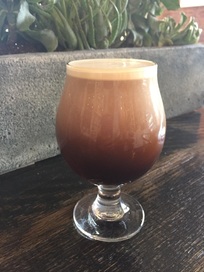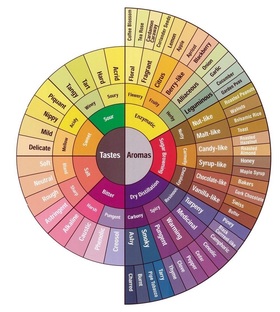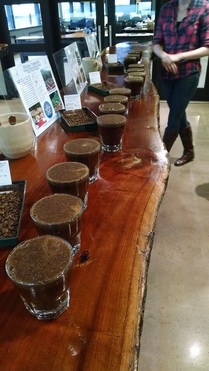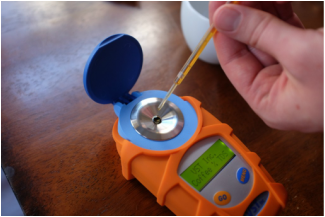|
Culture is always changing, and yet culture almost always maintains a certain level of tradition in its roots. Coffee culture is incredibly interesting to me, because lately in countries like the U.S. and Australia many groups are actively rejecting 'traditional' coffee culture and substituting in a plethora of new science, ideas and lingo. Throw out the percolators, chuck the burnt beans, and send back bitter espresso. Cool dudes with beards and tattoos and designer glasses replaced old school black and bitter brews with sweet and fruity 'offerings' in an effort to show how much this legendary bean really has to offer. It's funny, for how long coffee has been an integral part of our worldly culture like wine and beer it has taken until the last few decades for many people to really start caring about it.
Coffee used to be rich with stiff tradition – coffee was strong and dark and bitter and it gave you vigor and clarity, there was nothing else to be bothered with. Boil it in a pot, reheat it, load it with sugar if you were a pansy, it didn’t really matter what it tasted like – if you had to wince to get it down you knew it was working. It kept the U.S. going, as my dad would recall his sleepless nights in the Navy, coffee even defended this nation by keeping men and women of service motivated to do their duties. It was good, what else was there to fuss over? This general popularity of the drink is often referred to as the First Wave of coffee, it was something cardiovascular to the country, no use in examining it any further. And then the green siren called. Maybe not so much a green siren, but a business man named Howard Schultz single-handedly redirected the direction coffee culture was moving in America. On a trip to Italy, Schultz became fascinated at the coffee culture they had developed. Old gentlemen would stand behind bars and sling shots of espresso for hours and hours during the breakfast rush and workers and writers piled in, often without saying a word, down their espresso in one go and were off with the rest of their day. Poignant, efficient, poetic. Schultz was determined to tell his home country the wonders that coffee could bring to their daily lives if it could be captured in a new venue. This is how Howard Schultz becomes the CEO of a small Seattle based franchise called Starbucks. With the new idea that coffee can be a social activity, that it can be enjoyed rather than just seen as fuel was the start of the Second Wave of coffee, and it exploded in the market. The green and white clad franchise quickly swept the nation with countless competitors popping up left and right, all priding themselves of the tastiest beverages and the most comfortable scene. It was fun, a lot of fun actually, but customers weren’t exactly paying entirely for the full benefit of their taste buds, they were buying a way of life, an experience to share with their friends and family. Nobody at this point had really compared or fully studied coffee from a more basic angle, and so while the culture around coffee had changed quite drastically, the beverage itself wasn’t much more spectacular than it had been a few decades ago. Enter the Third Wave of coffee, the wonderful generation we are living in right now. The curious generation that asks why and how, that strives for quality over quantity, the nerds and the geeks. We realized that coffee can be much, much more than just a logo or social outlet, that it can truly be an incredible product with so many mysteries that we seek to discover every day. It can have the same stature as fine wines from France and the experimental nature of craft beer from Vermont – everything can and will be challenged. Taste can be revolutionized, culture can be changed. The fact that we are experiencing such a rich and developing culture that become deeper and deeper every single day is an incredible gift of the twenty-first century, and anybody with enough tenacity can put their mark on it. Next week I will continue talking about what the Third Wave has done and what it continues to explore, until then stay cool people!
0 Comments
 Nitro Cold Brew Surge! Nitro Cold Brew Surge! It has taken a bit longer than we had planned and we’ve been learning a lot through trial and error, but Boxwood is now proud to offer nitro cold brew on tap! The entire crew has been incredibly excited to get this venture up and running off the ground, and the rewards have been absolutely delicious. Nitro cold brew is a really interesting beverage, and it’s also something that can make you think about why you didn’t think about it first. It’s often remarked as the “Guinness of coffee” and has reason to be – the two beverages operate on the same principles and share a lot of common characteristics. Carbonation, as seen in beer, soda, seltzer water and the like is the result of carbon dioxide becoming readily dissolved in a liquid under pressure. When the pressure is released, bubbles of the gas are released from their fluid home and result in a fun, prickly feeling in your mouth and tongue. Nitrogen, on the other hand, is not nearly as soluble in fluid, but we can achieve dissolution by adding a lot more pressure and waiting patiently. When this high pressure is finally released, the nitrogen emerges from the fluid in much smaller particles that carbon dioxide and carries along some of the fluid around it, resulting in a much heavier and creamier body than carbonation can offer. Many stout beers, including of course the wonderful Guinness, have taken to pumping their brew full of nitrogen to bring forth creamier, maltier characteristics out of their already syrupy beers. It adds a layer of complexity and depth to them that wouldn’t exist if they were flat, and would be repulsive if they were bubbly carbonated. This practice has been going on for decades to enhance drinkability and reveling amongst brewers and drinkers, and now in recent years we have utilized some innovative thinking to bring uppers and downers a bit closer together by bringing the same concepts to coffee. Cold brew already has a lot of similarities to stouts in flavor profiles and mouthfeel, so why shouldn’t these concepts intended to add more texture and complexity translate over? Pumping El Jefe up with nitrogen would only make it’s already chocolaty and creamy characteristics even more pronounced and incredible, right? So we did it. We brew our cold brew for twenty–four hours, then we pour it into a keg, and then we hook that keg up to a big nitrogen tank pumping out 45 psi into it and let it sit in a fridge for forty-eight more hours. We pull it out and hook it up to a special tap designed to diffuse the nitrogen gas out of highly pressurized fluid. The tap gets pulled, and a beautiful milk chocolate brown substance flows out. As it fills the glass, tiny bubbles surge and foam in the deep dark ocean of coffee, a white lace forms at the brim and grows gently. Go ahead, take a sip. Creamy, velvety, lush, chocolate milkshake, silk blanket. These are the things that run through your head as you lick the foamy coffee mustache that embraces your lips. It’s good. Like, it’s really good, and you wonder why this thing has been missing from our life this entire time. We're super happy with the results and we really hope you all will too! Come on by for a nice, cold foamy jolt to get you through the weekend, you've worked so hard this week, treat yourself to something special and stay cool!  A flavor wheel like this can assist in determining coffee flavors A flavor wheel like this can assist in determining coffee flavors Last week I talked about flavor in coffee and where it comes from. That’s cool and all, but what about the flavors themselves? That snooty guy sitting next to you is going on and on about how his cup has hints of dried violet petals and wafts of a far-away orange grove, what’s the deal with that? Let’s get one thing straight – we’re all tasting the same coffee with the same flavors, how we verbalize it is the biggest difference. Developing one’s palate is at least great simply being able to distinguish individual flavors from the whole profile and finding a way to describe it with words. Two people may describe the same cup of coffee differently – that doesn’t make one of them right and the other wrong, it mostly just means that they haven’t figured out how to objectively define the flavors they taste. Don’t let Mr. Snooty over there intimidate you with his seemingly profound taste buds, he’s probably just trying to impress his date ;) So, let’s take a crash course in coffee cupping 101 Coffee cupping is a way to profile coffee in its most pure form. Freshly ground coffee in a cup is smelled dry, had hot water poured in it brew, smelled again and finally tasted. Tasting involves slurping incredibly obnoxiously from a spoon, exactly the way Mom told you not to eat tomato soup at the dinner table. Make as much noise as possible slurping and sipping from your spoon, this allows the entirety of the inside of your mouth to get coated with coffee to completely envelop your taste buds in flavor. These flavors can span a huge variety of qualities, but for now we’ll focus on a few basic and easily identifiable ones that can evolve into much more intricate and complex profiles. Chocolate. One of the most widely common flavors in coffee that is usually one of the first strong flavors one can take from a cup of coffee. Of course, there are different types of chocolate; milk, dark, semi-sweet, baking, cacao etcetera. Does this coffee taste like chocolate? If so, what kind? Nuts. Nutty coffees give chocolaty ones a run for their money and can offer some incredible strong suggestions in a cup of coffee from Central America. Like chocolate, nuts come in a variety of their own. Does this coffee taste nutty? What kind? Fruit. Fruitiness is where things can get a bit trickier as there exists a lot more distinct types of fruit than their does chocolate or nuts. The first tip to determine fruitiness is often the type of sweetness or juiciness a coffee displays, it can often be described as some sort of fruit. A good practice is to separate big categories apart and work your way down – try thinking of fruits as either dark, light or citrus. Darker fruit flavors exist in things like cherries, berries, currants and other ‘darker’ tasting fruits. Lighter fruits I categorize with things like apples and pears, peaches, white cranberries and other ‘lighter’ tasting fruits. Citrus is a bit more obvious to pick out, as they usually have a distinct zip or acidity to their and can range from lemons and limes to blood oranges and grapefruits. Earth. Earthy flavors are most often the densest flavors you will taste in a cup of darkly roasted coffee, and if the coffee has been over-roasted will appear overpowering compared to everything else I just mentioned. Earthy flavors can include organic flavors like carbon, wood, tobacco, dirt and ash. When a dark roast is taken care of, these notes can smell and taste like sweet pipe tobacco or fresh soil. When improperly handled, they can compare more easily to ashtrays and dark basements L These four categories are not nearly all of the categories a flavor can fall into, but they are a great place to start thinking about when you take the first few sips of your next cup of coffee. Slurp and swish and ponder these categories, break the flavors down and figure out what it is on you taste buds. If you think something doesn’t fit into these four categories, start thinking about other ones – spices, herbs, florals, pretty much anything is on the table! Don’t feel like you can’t have a trained palate because these flavors may not be obvious to you all at once, it can take a lot of coffee tasting to figure out what everything is! Thankfully I know of a really cool place with a lot of great coffee and friendly, educative staff you can go to get a jump start on your rejuvenated coffee addiction ;) Stay cool people!  Coffee set up for cupping Coffee set up for cupping Coffee is complicated. Nevermind the endless methods for brewing that bloggers and baristas are constantly tweaking and innovating, the staggering plethora of bean varieties is enough to make your head swim. Like fine wines or craft beer, specialty coffee has an incredible amount to offer if you know where to look and what to taste. So, where am I looking? What am I tasting? Coffee comes from the coffee plant (who woulda thunk?) and that plant can grow in a lot of places; mainly South American, Central America, Africa and many Southeast Asian countries. All of these locations have different soils, different climates and ever-changing elevations along with a multitude of other variables that differ not only country to country but in between farms only a few miles apart. This is the biggest reason one coffee will taste differently than another. Generally speaking, coffees from Central and South America are more breakfast-y; simple, mild and full of nuttiness, floral notes and usually sweet and easy to drink. Coffees from African countries are often more vibrant, ranging in bright florals and citrus to juicy berries and dark fruits. Southeast Asian countries produce beans with more denser profiles, and often carry a lot of earthiness and dark chocolate notes with them. Of course, there are always glorious exceptions to these generalizations. For example, our own Colombian Asojardin displays incredibly sweet strawberry and juicy fruit flavors uncharacteristic of many more nutty and chocolaty Colombian brews. Geography isn't the only thing that dictates a coffee's flavor. How the beans are picked and processed determines a lot of the final product. Coffee needs to be fermented and washed to be able to be roasted and served, and there are a few ways to do this. 'Dry' or 'natural' processed coffees are left to ferment in the dried coffee cherries themselves before being pulped and washed and dried again. These types of coffees can often be more inconsistent because the quality of the seed is hidden by the fruit as it is processed, but the procedure results in beans with a much denser, juicier flavor and mouthfeel. Beans that have been 'wet' processed are pulped first and then fermented in big tanks that allow for more hands on control and offer greater consistency. These types of coffees are much more clean tasting and are generally more delicate and vibrant. Personally, I've always been a sucker for natural processed African coffees, who doesn't want to drink a cup of coffee that tastes like blueberry pie? Now, when we talk about what a coffee tastes like and start rattling off things like pie or orange peel or marzipan, they aren't necessarily these giant, in your face flavors that come from chomping into a fruit or adding some syrup or artificial flavoring. Rather, they are more suggestions that help describe how the coffee tastes as a coffee. Just like how a sommeliere would describe a wine or a brew master would describe a beer, baristas will describe the profile of a coffee the best way they can verbally to help a customer or fellow taster understand how the coffee displays itself to the senses. It is still coffee, but this is how Coffee A is different than Coffee B. Is this a lot of information? Yes. Is it overwhelming? Probably. How am I supposed to make sense of it? Taste coffee. Work your way backwards and make your own observations. If you liked one coffee, ask yourself 'why?'. Ask the barista about the coffee, read its flavor profile and where it came from. Ask the person next to you what they tasted, did you taste the same thing? Do the same if you find coffees you don't like, what qualities made it less appealing? Identify characteristics in your own words and ideas. Don't let someone tell you that you've tasted something incorrectly or even differently, but understand how different people can approach the same flavors differently when verbalized. Coffee tasting can become very social and incredibly informative even in a casual setting and it will always make things clearer at the end of the day. Everyone is always learning, even the most experience baristas and professional tasters will always keep and open mind about the endless profiles a coffee can offer That being said, I still have a personal belief that the best coffees are fine enough that they don't need to be fussed over. As long as you enjoy the cup in your hand and it's good, well then that's the whole point. Sit back, look out the window and sip. Now, isn't that nice? Stay cool good people!  A refractomter like this can determine the total dissolved solids in coffee, helping identify its extraction levels A refractomter like this can determine the total dissolved solids in coffee, helping identify its extraction levels Coffee is mysterious. Seriously, for how much we create and consume this incredible beverage there are always surprises and inconsistencies that leave us scratching our heads at the end of the day. Roasting patterns, extraction variables, flavor profiles, brewing techniques - as soon as we pin down one thing and think we finally "get it" something else will pop up to throw us a curve-ball. There exist a lot of theories about the mysteries of coffee roasting and extraction and how certain variables will affect the outcoming cup, and there are a lot of really cool gadgets to help us quantify proper extraction and consistency. At a recent education class at Royal New York, we learned how we can use certain equations and tools like a refractometer to objectively determine if a cup of coffee is brewed as close to "perfect" as it can be. By altering parameters like grind size, water temperature and brew time, we were able to construct some really amazing cups of coffee that were brewed withing prime extraction yields in a lab setting. It was incredibly interesting and educational, but what happens when your kitchen isn't a laboratory? Trial and error - almost anything goes. While we learned how to brew cups that were defined as "good" by numbers and percentages, an equally valuable lesson learned was that if the coffee isn't delicious, then the numbers don't always matter. Deliciousness can't really be universally quantified, so if you don't like the way your coffee turned out, change something about the process you used to brew it and try again - it's really just a constant experimentation with your taste buds that may never totally be over and done with. I have been told that preparing coffee is equal parts science and intuition; there's a time and a place to be clinical about it and other times when you're alone in your kitchen to just say 'screw it' and try something stupid and crazy. Change the grind size, alter the water temperature and fiddle with the brew time. There are plenty of guides and canned theories that you can find online (even on this site!) that can get you started in the right direction, but something will go wrong, and you will have to fix it. It's okay though, I believe that you can do it! Don't be afraid to taste some really bad coffee as you gain your footing, like many things in life it's how you learn what not to do. Seek your own answers and you will find yourself in a wonderful relationship with a beverage that hugs you from the inside out :) Stay cool everyone! |
AuthorHayden Kaye is our Master Roaster and head of the Say Interesting Stuff department. Archives
December 2017
Categories |

 RSS Feed
RSS Feed